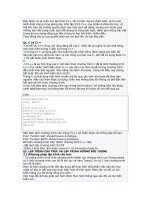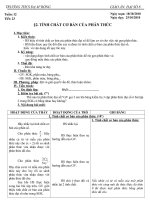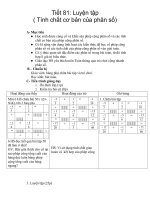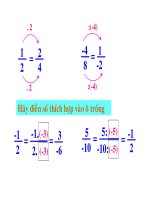C co ban 8 HHK compatibility mode
Bạn đang xem bản rút gọn của tài liệu. Xem và tải ngay bản đầy đủ của tài liệu tại đây (977.92 KB, 14 trang )
Lập trình trên Windows
với Microsoft® .NET
Giảng viên : Hồ Hoàn Kiếm
SDI Application
SDI (1)
New
Document
An SDI
application can
have only one
active window
at a time
MDI Application
MDI (2)
Outer Window
(or)
Parent
Window
Inner Window
(or)
Child Window
MDI Application
Designing an MDI application
IsMdiContainer = true
MDI Application
Activating and Deactivating Windows
Deactivate
child
window
Active
child
window
MDI Application
As with the control
at runtime
As in MDI form
during design
Main Menu
Displays a menu at runtime
MainMenu can be created in two ways:
Using the MainMenu
control, and menu designer
at design time
Creating an instance of the
MainMenu class at runtime
MainMenu myMainMenu = new MainMenu();
this.Menu = myMainMenu;
Main Menu
MenuItems
PROPERTIES
Index
ShowShortCut
EVENTS
METHODS
Context Menu
Context menus give users access to frequently used
commands by clicking the right mouse button
Context menus are created with the help of the
ContextMenu control
ToolBar
It is situated immediately below the menu bar
The buttons in a ToolBar are analogous to the items in a menu
ToolBar control icon
as in ToolBox
Different button appearance options:
• DropDownButton
• Separator
• ToggleButton
Form Level and Control Level Validations
Validate data in all the fields in the form
Enable and Disable controls based on
user input
KeyPress
KeyDown
KeyUp
Types of Errors
Errors
Description
Syntax Error
Occurs when we enter an incorrect line of code such as a
mistake in typing a keyword, missing punctuation, or an
incorrectly specified variable.
Run-time Error
Occurs when a command attempts to perform an invalid
action.
Logic Error
Occurs when an application executes without syntax
errors or run-time errors, but the results are not which
were intended.
ErrorProvider Control
ErrorProvider control can be used to
display an error icon when the user enters
invalid data.
Properties
BlinkRate
Methods
GetError
BlinkStyle
SetError
ContainerControl
Icon
Exception Handling
Exceptions can be handled with the help of :









